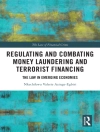The field of antioxidant research has grown rapidly over the last 30 years and shows no sign of slowing down. In order to understand how antioxidants work, it is essential to understand how their activity is measured. However, antioxidant activity measurements are controversial and their value has been challenged. This book addresses a number of the controversies on antioxidant testing methods. Specifically, the book highlights the importance of context, helping the reader to decide what methods are most appropriate for different situations, how the results can be interpreted and what information may be inferred from the data.
There are a multiplicity of methods for measuring activity, with no standardized method approved for in vitro or in vivo testing. In order to select an appropriate method, a thorough knowledge of the processes associated with reduction-oxidation is essential, leading to an improved understanding and use of activity measurements and the associated data. The book presents background information, in a unique style, which is designed to assist readers to grasp the fundamentals of redox processes, as well as thermodynamics and kinetics, which are essential to later chapters. Recovery and extraction of antioxidants from diverse matrices are presented in a clear and logical fashion along with methods used to determine antioxidant activity from a mechanistic perspective. Other chapters present current methodologies used for activity testing in different sample types ranging from foods and plants, to body fluids and even to packaging, but always with a strong emphasis on the nature of the sample and the underlying chemistry of the method.
A number of emerging techniques for assessing antioxidant behaviour, namely, electrochemical methods, chip technology exploiting microfluidic devices, metabolomics plus studies of gene and protein expression, are examined. Ultimately, these techniques will be involved in generation of ‘big data’ for which an understanding of chemometrics will be essential in drawing valid conclusions.
The book is written to appeal to a wide audience, but will be particularly helpful for any researchers who are attempting to make sense of the vast literature and often conflicting messages on antioxidant activity.
Tabla de materias
Introduction to Basic Principles of Antioxidant Activity; Antioxidants Recovery and Extraction; Antioxidant Activity – Preliminary Considerations for Measurement; Free Radical Inhibition Mechanisms – Implications for Measurement; Total Antioxidant Capacity Measurements in Food and Beverages; Exogenous Antioxidants Derived from Plants, Fungi, and Other Taxa; Oxidative Stress and Response in Physiological Systems; Accelerated Stability Testing – History and Recent Developments; Measurement of Antioxidant Concentration in Active Food Packaging – Impact on Activity in the Stored Food; Antioxidant Activity and the Role of Gene and Protein Expression in Oxidative Stress; Antioxidant Measurements Using Microfluidics Technology; Chemometrics in Antioxidant Activity Measurements; Electrochemical Measurements; Metabolomics and the Measurement of Antioxidant Behavior;
Sobre el autor
Charles Sturt University, Australia












